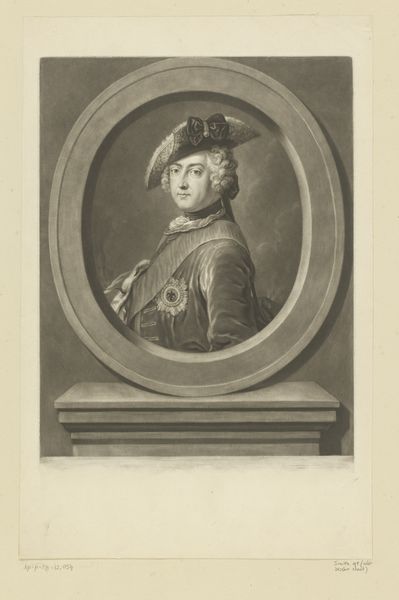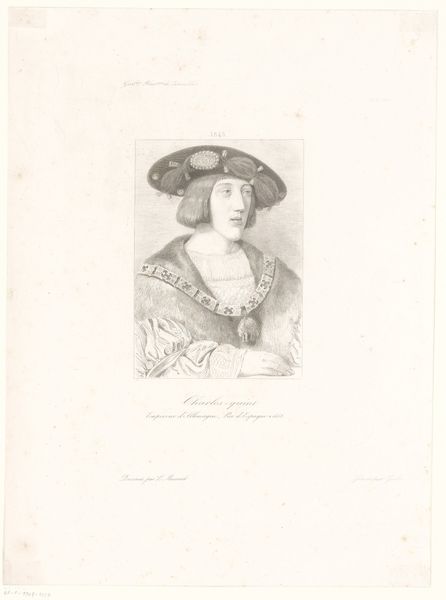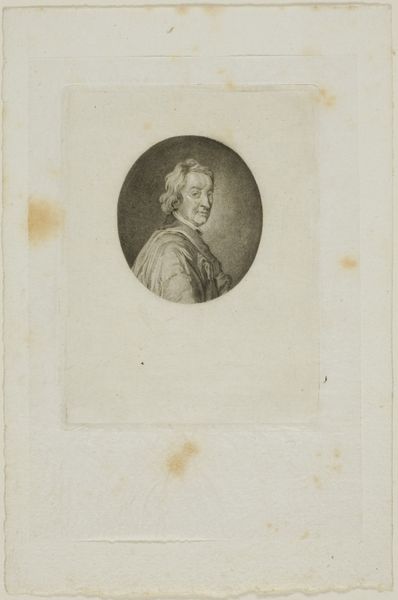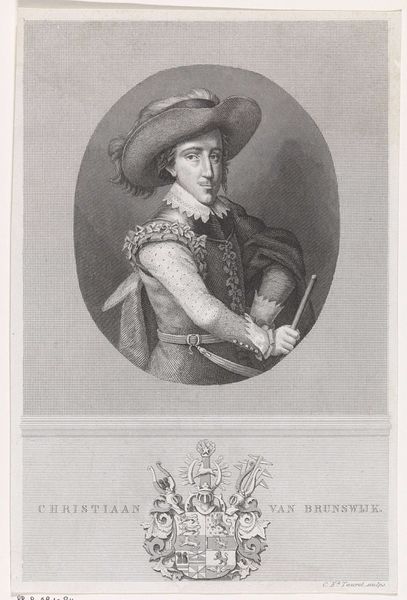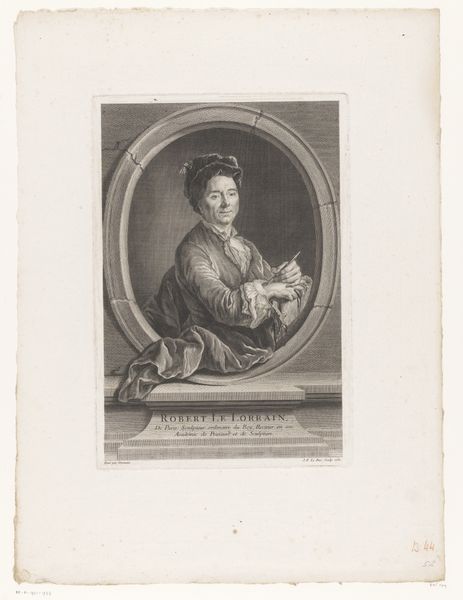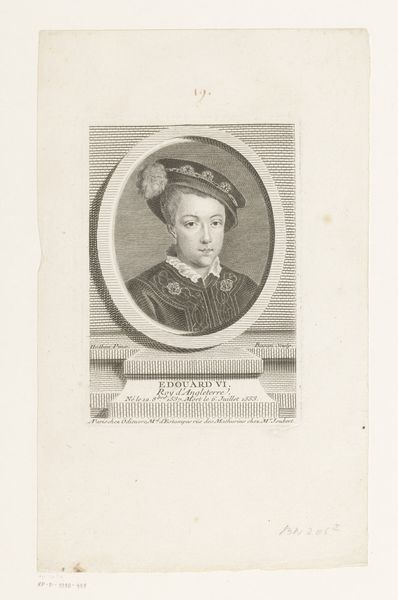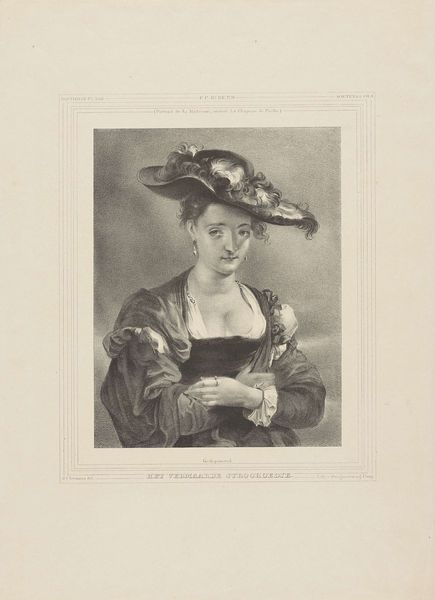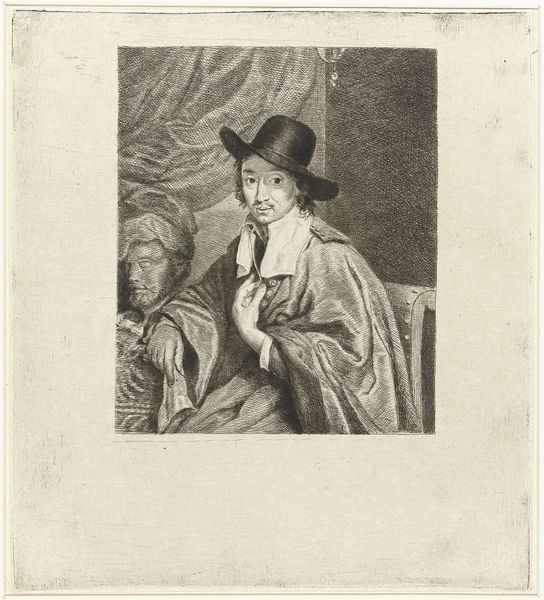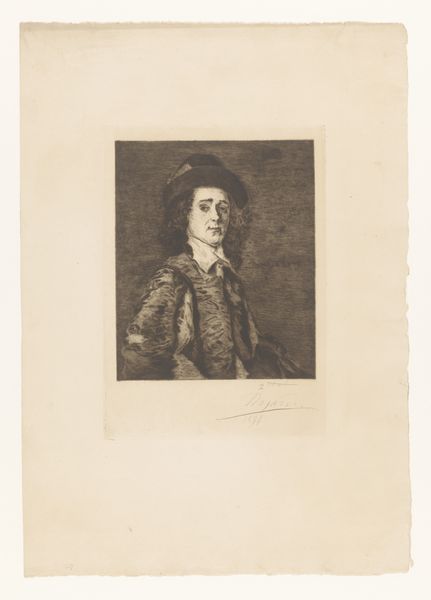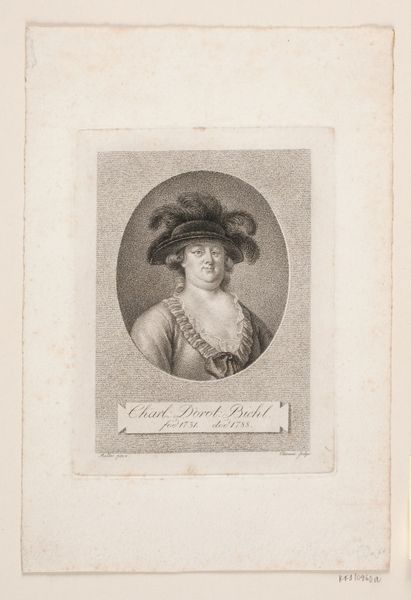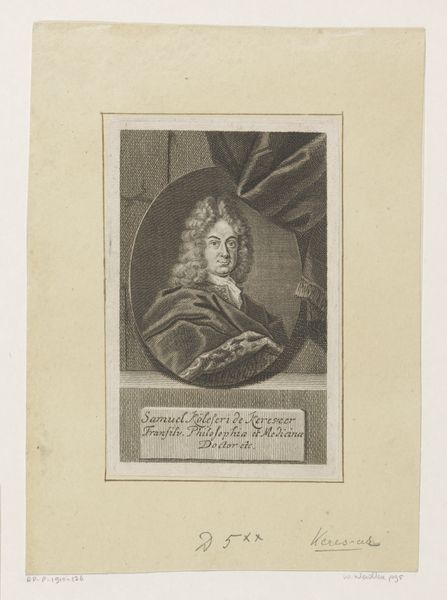
engraving
#
portrait
#
neoclacissism
#
pencil drawing
#
geometric
#
history-painting
#
engraving
Dimensions: height 393 mm, width 267 mm
Copyright: Rijks Museum: Open Domain
Curator: This is a fascinating engraving crafted by Vincenz Georg Kininger in 1788, titled "Portret van Josef Graf von Fries," depicting the esteemed Count Joseph von Fries. The work showcases the prevailing Neoclassical style of the time. Editor: Whoa, check out that hat! All those feathery plumes give him a theatrical air, right? A little bit flamboyant, maybe even a touch mischievous! Curator: Indeed! The flamboyant aesthetic serves a function here. In the twilight of the Enlightenment, portrayals of nobility navigated the tricky waters between celebrating aristocratic lineage and downplaying excess privilege. Notice the strategic composition choices; how the oval framing evokes the geometric rationality prized during that period, subtly reinforcing social hierarchies while trying to seem progressive. Editor: I get that. But something about his expression strikes me… it is knowing. Like he knows he's posing, and maybe even winking at the whole idea of portraiture. Is it just me or does that gesture, the crossed arms, feel less stately and more...defensive? Curator: Interesting point. One can interpret the pose as protective or reserved. Perhaps hinting at anxieties amongst the nobility as the seeds of revolution were taking root, calling into question structures of power across Europe and in Fries’s native Austria. Editor: Revolution in fashion, too! Forget those powdered wigs; that naturalistic, almost messy, hair style says so much! Almost as if the sitter, perhaps subconsciously, feels that less rigid is a bit more apropos for an oncoming historical moment. It looks almost like it's pushing against the stiff collar and the formal cloak. Curator: Right! Here we see the push-and-pull reflected in his sartorial choices. Even in official portraiture, we notice markers of how the winds of change impacted dress codes; class, gender, and national identities— all carefully, often performatively, projected here. Editor: And the engraving! How he used line and shadow just blows me away. You know what I see now? The overall tonal range creates an ephemeral quality. This engraving, for me, almost feels like a ghost of a different age, inviting me to revisit those conversations about legacy and power. Curator: Ultimately, I think that this portrait challenges us to reevaluate established readings of artworks through more attuned historical, material and intersectional approaches to understanding portraiture. Editor: A haunting and evocative historical riddle!
Comments
No comments
Be the first to comment and join the conversation on the ultimate creative platform.
